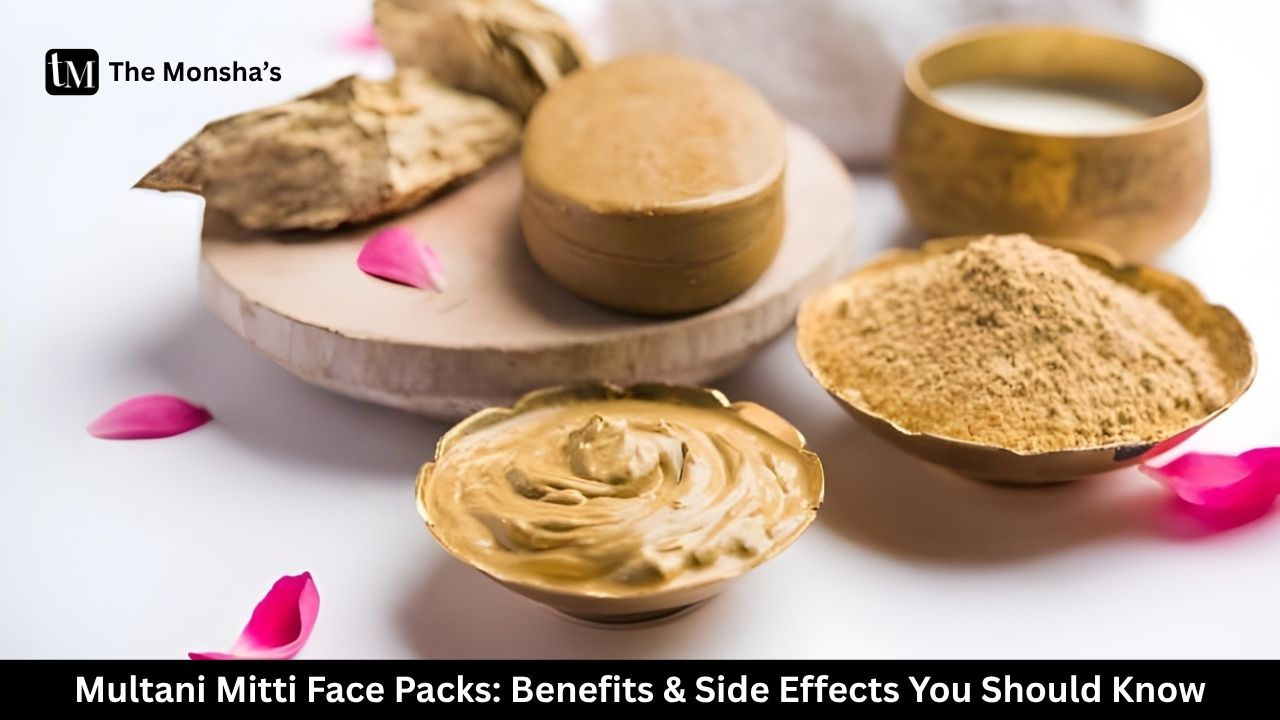
“Mitti se hi toh sona ban jaata hai… aur skin bhi!” Okay fine, not exactly what the song said, but you get me. 🤭I’ve grown up seeing my nani mix Multani mitti with rose water every Sunday — and let me tell you, the cooling smell still screams ghar ki skincare. But here’s the thing — as much as it’s a natural legend, Multani mitti isn’t everyone’s best friend. Overdo it, and your skin might just send you divorce papers.
So, let’s get real. Is this humble clay the glow-giver it claims to be, or just another DIY gone too far?
Multani mitti = fuller’s earth, a mineral-rich clay. Benefits: oil control, acne reduction, brightening, soothing, and pore minimising. Side effects: dryness, irritation, barrier damage if misused. Best for oily/combination skin, less friendly for dry/sensitive skin. Use max 1–2x/week, mix with hydrating ingredients.
What Exactly Is Multani Mitti?
Straight from Multan (now Pakistan), this clay has been around for centuries. It’s basically a mix of hydrated aluminum silicates, magnesium, calcium, and trace minerals. In skincare, it:
It’s cheap, effective, and widely available — but also powerful enough to need caution.
Acts like blotting paper for oily skin. It soaks up excess sebum, unclogs pores, and gives a matte finish without harsh stripping. Perfect for sweaty, humid days.
By removing impurities and calming inflammation, Multani mitti can reduce blackheads, whiteheads, and mild acne. Some studies show clay masks lower bacterial activity on skin.
It gently exfoliates, removing dead cells. Paired with rose water or lemon juice (in moderation), it gives that “instant fresh” look — the desi version of glass skin.
As the mask dries, it tightens the skin, temporarily shrinking pore appearance. Not permanent, but great before events.
Nothing beats Multani mitti on a hot day. It calms redness, rashes, and post-sun irritation. Basically, AC for your face 🧊.
No chemicals, no lab coats. Just mix with rose water, aloe, milk, honey, or turmeric depending on your skin type.
Multani mitti plays well with others — brightening (turmeric), hydrating (honey), calming (aloe), tanning relief (tomato).
Before you start bathing in it daily, hold up.

👉 Moral: Benefits are real, but only if you respect the mitti.
Confession: I once did the classic mistake — applied Multani mitti every night before bed (Delhi summers do this to you). My cheeks literally started flaking like a paratha. 🫠 Lesson learnt: less is more. Now I mix it with aloe or honey and stick to once a week. Works like a charm.
Q: Can dry skin use Multani mitti?
A: Yes, but always mix with honey, milk, or aloe.
Q: How many times a week?
A: 1–2 for oily, 1 for dry/sensitive.
Q: Can I leave it overnight?
A: Big NO. It will over-dry and irritate.
Q: Does it remove tan?
A: Helps lighten tan gradually, especially with tomato or lemon mixes.
Q: Can it clear scars?
A: Mild pigmentation, yes. Deep scars, no — consult a derm.
Multani mitti is basically the desi OG clay mask — cheap, effective, and versatile. But like every good thing, it comes with conditions: use smartly, don’t overdo, and tailor it to your skin type.
“Thoda mitti, thoda pyaar — aur bas, glow ready for shaam ka shingar.” 💛
So, next time you mix that bowl, remember: your nani was right… but your skin barrier deserves modern wisdom too.